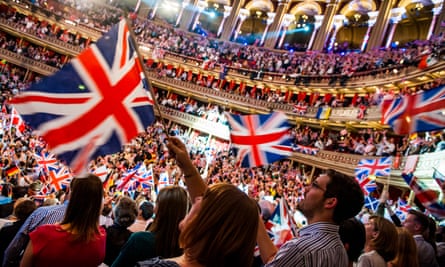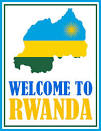As it’s a year since I set off for India, I thought I’d draw interested readers attention to my wanderingsatlan blog (Alex Stein).
“The future beckons us. Whither do we go and what shall be our endeavour? To bring freedom and opportunity to the common man, to the peasants and workers of India; to fight and end poverty and ignorance and disease; to build up a prosperous, democratic, and progressive nation; and to create social, economic, and political institutions which will ensure justice and fullness of life to every man and woman.” Pandit Jawaharlal Nehru, August 15, 1947
India may yet lead the world. In 1917 Rabindranath Tagore wrote the following:
“In finding the solution to our problem, we shall have helped to solve the world problem as well…if India can offer to the world her solution, it will be a contribution to humanity.”
The problem: a territory ravaged by ethnic, caste and religious division, a land mired in poverty and under colonial rule. The assumed solution: national liberation and independence. With national groups around the world preparing to state their case for self-determination at the Paris peace conference, Tagore tried to put forward an alternative, one based on that most slippery of concepts, ‘culture’. For him, nationalism (in its western garb) was an alien concept, far removed from the romantic and spiritual complexities of life in the subcontinent.
“We, in India, must make up our own minds that we cannot borrow other people’s history, and that if we stifle out own we are committing suicide. When you borrow things that do not belong to your life, they only serve to crush your life…I believe that it does India no good to compete with western civilisation in its own field…India is no beggar of the west.”
Like other cultural idealists before and since, Tagore’s ambiguities and hostility to politics did not lend itself to the programmatic action demanded by the age. India chose another idiosyncratic path – the path of Gandhi, satyaghara and nationalism, albeit a nationalism that – filtered through today’s nostalgia – comes across as infinitely more noble and moral than its contemporaries. Aside from the emphasis on non-violence, India’s founding fathers were determined – despite the obstacles – to ensure that the new republic would be a home for all its people, despite their mind-boggling multiplicity.
They failed. Twelve million people were displaced as a result of partition, with hundreds of thousands killed. India was born in pain. This was not a one-off, either, as anti-Muslim pogroms in the Gujarat and elsewhere reminded us in the 1990s. Add to this inter-caste violence in rural India, intermittent wars with Pakistan, not to mention the occasional political assassination, and it’s hard to escape the conclusion that India has been primarily defined by its violence.
And yet it is still a country which offers hope to people around the world, people who are waiting for India to “offer to the world her solution.” India stands at the centre of two central issues which will shape the twenty-first century. Firstly, can poverty be conquered through the free-market alone? Secondly, can a nation be a home to all its minorities whilst at the same time retaining a distinctive identity?
(1) Since the 1990s, India has opened up its markets on a scale and speed that defies belief. Today it is the second-fastest-growing economy in the world (behind China), with an annual growth rate of 7% in 2006. With a middle-class of over 200 million people, it is a high-tech centre that is attracting investment from all over the world. But it remains home to 40% of the world’s poor: 800 million Indians live on less than £1 a day. Social inequality is massive, there are severe water shortages (India has 17% of the world’s population but only 4% of its freshwater), and it has the world’s single largest population with AIDS – more than 5.7 million people. The travellers cliché about a ‘land of contrasts’ seems to have been designed for India, a country where the first and the third world are said to live just a block apart.
(2) India is, famously, the world’s largest democracy, a “sovereign socialist secular democratic republic.” Often wrongly assumed to be an officially Hindu state, it is home to one of the largest Muslim populations in the world. Even forgetting the Muslim minority, the 80% of the country that is Hindu is divided into a beguiling mixture of castes and ethnic groups, often with little formally in common. 22,000 different dialects are spoken in India, with even the rarest ones spoken by more people than the entire population of Norway. India is the exception to the rule, the nation without a common ‘societal culture’ or language, or even history. When Gandhi, in the face of Hindu extremism, declared himself to be a Muslim, he was not making a radical statement. He was merely expressing the bare minimum of aspiration that might secure unity in the fledgling nation. In a world in which – despite constant predictions to the contrary – national division remains rampant, the importance of India not going the way of the Hindu chauvinism proposed by the likes of the BJP cannot be overestimated. The international relations cliché about ‘making the Balkans seem like a picnic’ seems to have been designed for India, where even a minor outbreak of urban violence could lead to the death of thousands.
So which way will India go, and why – despite her problems – are we still dazzled by her? Why, in the words of E.P. Thompson, is she “the most important country for the future of the world”? It would be too trite to seek the answers in oriental notions of the beguiling east and India’s ancient spiritual traditions, but at the same time it is clear that Hinduism (not to mention Buddhism) is often given much greater leeway for its immoralities (most notable the caste system) than its monotheistic counterparts. Even if spiritualism was the answer, though, this would not explain the phenomenon of contemporary India and its astonishing economic impact. Backpackers and their tales do not a burgeoning power make.
Soft power plays a major role. India has a 20 million strong diaspora. These ‘Non-Resident Indians’ (NRIs) have been hugely successful in their adopted homelands – particularly the UK and the US – and are now beginning to turn their attention to ways in which they might make a lasting contribution to Indian development. From Bollywood to cricket, curry to the sitar, Indian culture has made an impression in the west that is the envy of its counterparts. And it would be wrong to ignore the sheer power of numbers. India accounts for one-sixth of the world’s population. Bollywood moguls aren’t interested in the American market because ‘there’s only three hundred million people there’, the new cricket IPL looks set to become one of the world’s largest sports operations. India’s huge middle-class and its diaspora has the clout to make a success of anything it puts its mind to.
Despite all the optimism, India’s future is still in the balance. Its entrepreneurs talk of a five to seven year window for solving the country’s problems. According to the UN, hunger and malnutrition are bigger problems now in India than they were in the 1990s, and that the gap between those who eat well and those that can’t continues to widen. At independence 80% of India’s GDP came from agriculture, with 75% of people living in urban areas. Today, only 30% of GDP comes from agriculture, yet 70% of people still live in cities. For all the hype, IT has only created 1.3 million jobs, a drop in the ocean of India’s massive population. “That,” says Ajit Balakrishnan, the founder of Rediff.com (India’s largest Internet portal), “is what keeps me up at night.” This is the dark side of progress, what Arundhati Roy calls “the most successful secessionist struggle ever waged in independent India – the secession of the middle and upper classes from the rest of the country.”
A window of five to seven years makes this a propitious time to be visiting India. That being said, summer isn’t supposed to be the most auspicious time to head to the subcontinent, although as a wise man once said, “the best time to visit India is when you can.” I fly to Delhi, and from there I plan to head to Amritsar, Dharamsala, Kashmir, before heading to the source of the Ganges, the life-blood of the country, and – according to Hindu tradition – the source of the universe itself. My plan is to follow the Ganges all the way down to Varanasi, or perhaps even further. This blog will record the journey.


